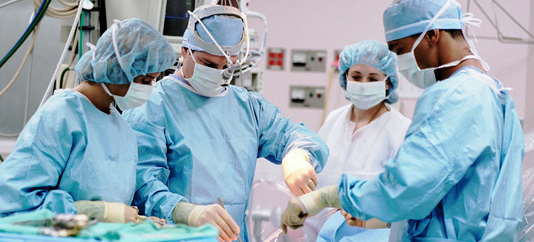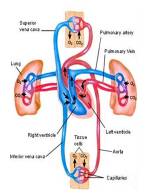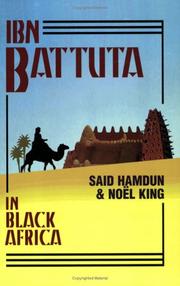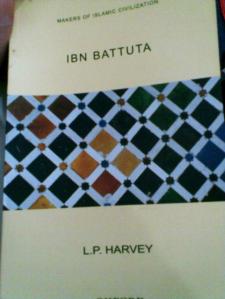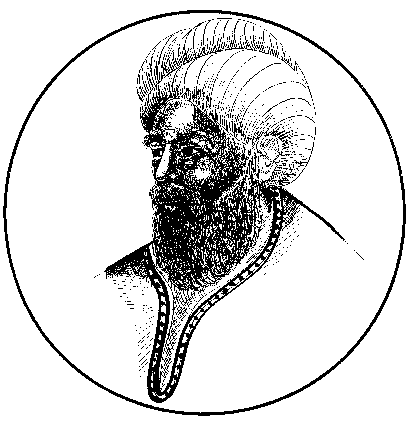
Pada saat yang hampir bersamaan, ketika “algebra”
sedang diterjemahkan. John dari Seville membuat sebuah versi bahasa
Latin terkenal yang merupakan penyesuaian dari karyanya sendiri atau
karya beberapa penulis muslim, yang telah hilang dalam versi bahasa Arab
kecuali “Kitab Hisab al-Adab al-Hindi”. Karya John dari Seville itu berjudul “Liber Alghoarisme de Pratica arismetrice”.
Hubungan-hubungan
yang ada diantara beberapa karya Abad Pertengahan yang berasal dari
karangan al-Khawarizmi tampaknya masih kurang memadai. Namun semuanya
mempunyai karakteristik umum, sehingga mereka menjelaskan bagaimana
bekerja dengan sejumlah angka-angka dan bilangan-bilangan Arab yang
pernah terkenal pada abad ke-3H/ke-9M. di semenanjung Iberia. Mengenai
angka-angka ini, sarjana-sarjan abad pertengahan menemukan berbagai
macam etimologi dan legenda-legenda. Gasper Tejada, misalnya menegaskan
bahwa “Nol itu bukanlah sebuah tanda melainkan suatu ruang kosong”. Ini merupakan sebuah ide yang didapatkan jauh lebih awal dalam “Mafatih al-Ulum” atau “Keys of the Science”.
Angko
nol atau kosong, dalam bahasa Arab disebut sifr. Dengan angka ini kita
dapat menghitung puluhan, ratusan, ribuan dan seterusnya. Sebelum angka
nol ditemukan atau diciptakan oleh orang Islam, orang menggunakan abacus
sempoa semacam daftar yang merupakan jadwal dimana ditunjukan satuan
puluhan, ratusan dan seterusnya untuk menjaga agar setiap angka tidak
saling tertukar dari tempat yang telah ditentukan dalam hitungan. Sayang
sekali bahwa abacus ini kurang populer dikalangan pemakai. Terbukti
ketika Boethius dan Gerbert mencoba memperkenalkannya di Barat pada
sekitar abad ke-10 M. ternyata kurang mendapat perhatian. Orang malah
meniggalkannya dan berganti memakai raqam al-binji penemuan
Al-Khawarizmi. Orang Islam membawa angka ini bersama dengan angka nol,
yang baru menggunakannya setelah kira-kira 250 tahun dipakai orang Islam
sendiri. Yang mungkin perlu ditelusuri lebih lanjut adalah mengenai
penggunaan titik kecil sebagai pengganti angka nol yang hingga kini
tetap terpakai dalam penulisan angka Arab
Sebuah
karangan Al-Khawarizmi yang dianggap penting juga telah disalin ke
dalam bahasa Latin oleh Prince Boncompagni dengan judul “Trattati d’ Arithmetica”.
Buku tersebut membahas beberapa soal hitungan dan asal-usul angka,
serta sejarah angka-angka yang sekarang ini kita gunakan. Buku terbit di
Roma pada tahun 1857 M.
Bentuk actual angka-angka yang kurang penting untuk operasi-operasi digambarkan dalam “Liber Alghoarismi”,
namun operasi-operasi tersebut dilakukan dengan cara 9 atau 10
simbol-simbol yang secara tidak langsung menyatakan suatu penyetahuan
tentang aturan-aturan yang diuraikan secara terperinci oleh
Al-Khawarizmi. Di Spanyol cara ini telah dikenal sekitar abad ke-10M,
yang membuktikan adanya suatu cara penulisan bilangan dengan system
posisional dengan dasar 10. dengan hal bentuk angka-angka yang digunakan
pada waktu itu, sementara masih dilacak terus.
sumber dari: banggundul.web.id









